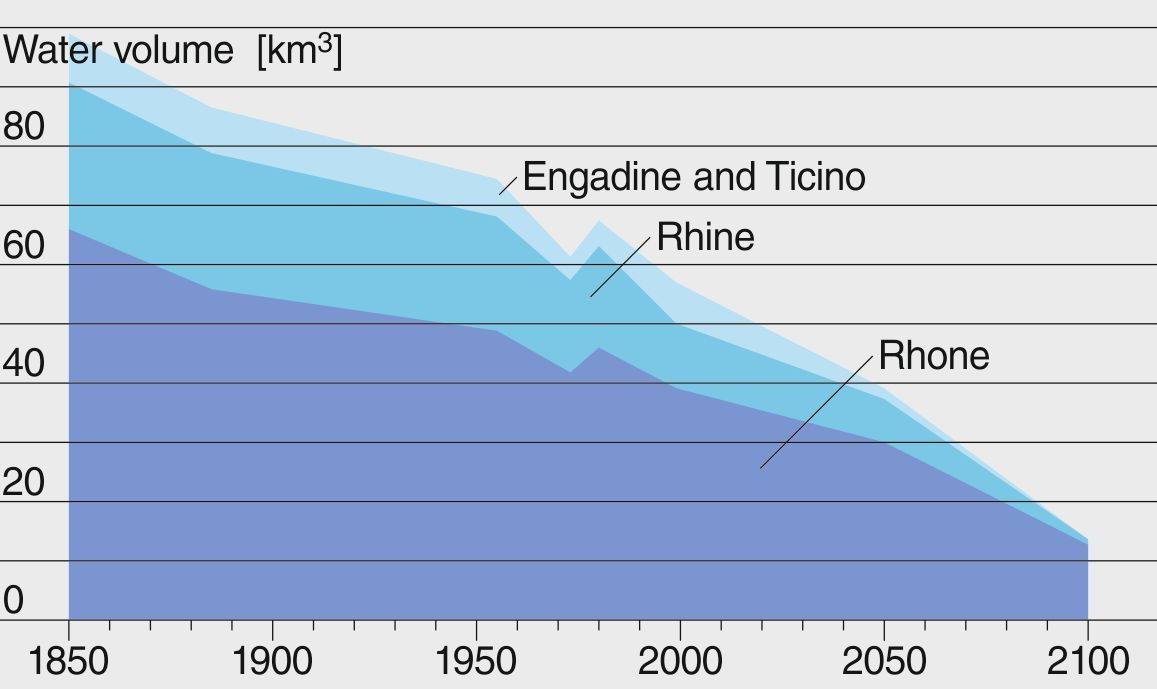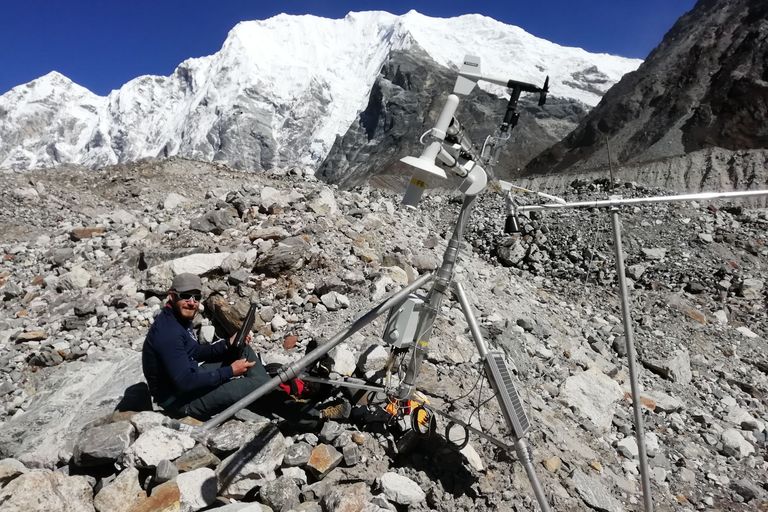Shrinking glaciers
The melting of Switzerland’s glaciers has been observed for many years. Since the end of the Little Ice Age around 1850, the volume of glaciers in Switzerland has decreased by more than half. As temperatures increase, glaciers melt faster and precipitation falls more often as rain than as snow. When glaciers melt, the important “glacial reservoir” of the water balance changes.
At the moment, glaciers are not in equilibrium with the current climate conditions. Were the climate to remain as it is today, the glaciers would continue to shrink over the next several decades to half of their current volume. However, experts expect an increase in temperature of 3°C by the year 2085 (plus or minus one degree). This warming will have severe repercussions for Swiss glaciers: according to models, only 20 to 30% of the current glacier volume will remain by 2100. Most of the remaining glacier volume will be in the Rhone catchment area, thanks to the largest glacier in Switzerland, the Aletsch.

Events, News, Publications

Interview mit Marin Kneib auf RTS
Anlässlich der Auszeichnung mit dem Prix de Quervain 2023 durch die Akademien der Wissenschaften Schweiz hat Radio Télévision Suisse (RTS) am 24. Oktober 2023 ein Interview mit Marin Kneib ausgestrahlt.
Image: Marin Kneib
Prix de Quervain 2023: 37,000 ice cliffs and their influence on glacier melt in the Himalayas
More than ever before – Marin Kneib has employed the latest satellite technology and camera systems to measure over 37,000 ice cliffs. The researcher will be awarded the Prix de Quervain 2023 by the Swiss Academies of Arts and Sciences for an extremely comprehensive doctoral dissertation at the ETH Zurich and the Swiss Federal Research Institute WSL.
Image: Marin KneibForumAlpinum 2024 - Call for contributions
We are happy to invite you to submit your abstract of scientific paper presentation for the ForumAlpinum, addressing one or several of the topics listed or any other biodiversity/geodiversity related topic. Abstracts are accepted until 24th of November and should be max. 250 words long including title, a brief description of the theme and content, up to 5 keywords, and the name(s) of the author(s) with affiliation.
Image: Lena Kropivšek
